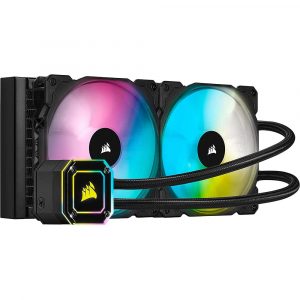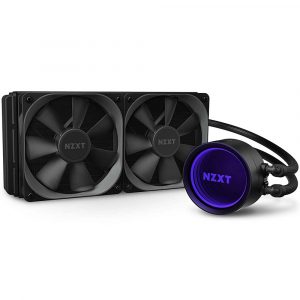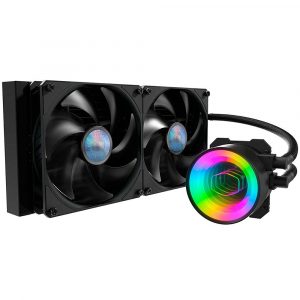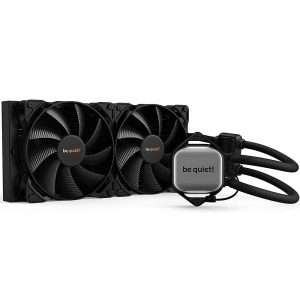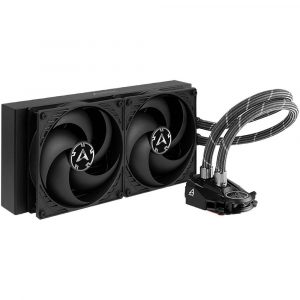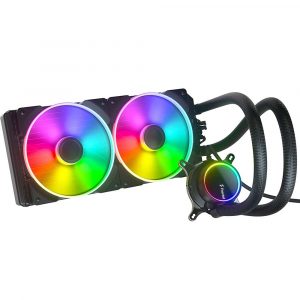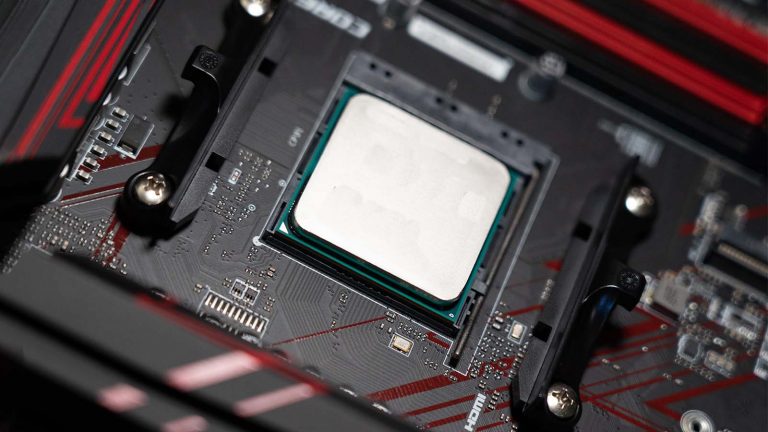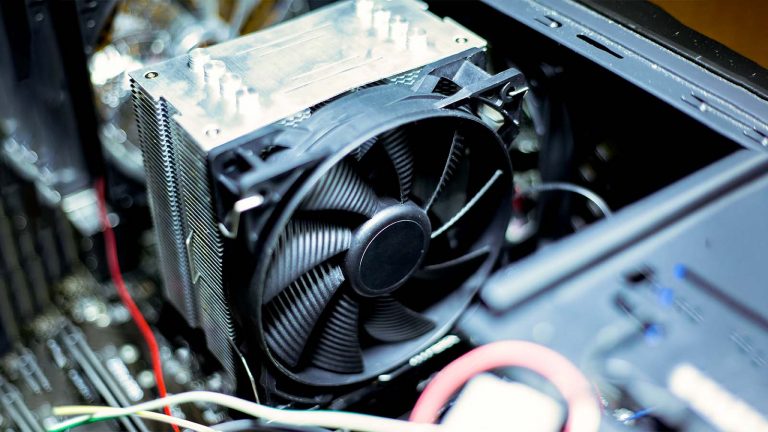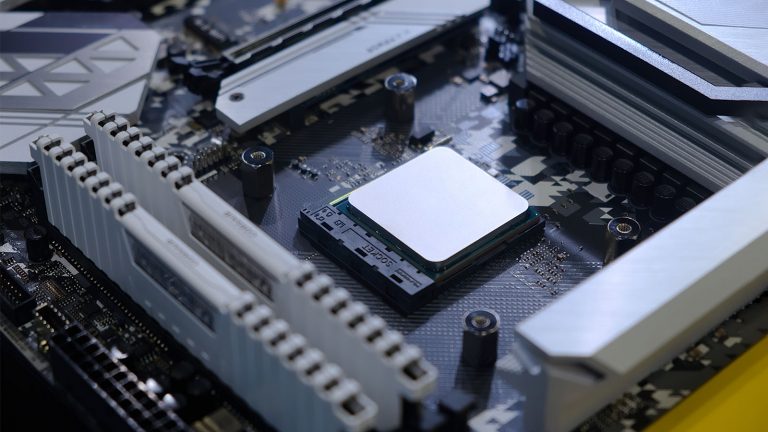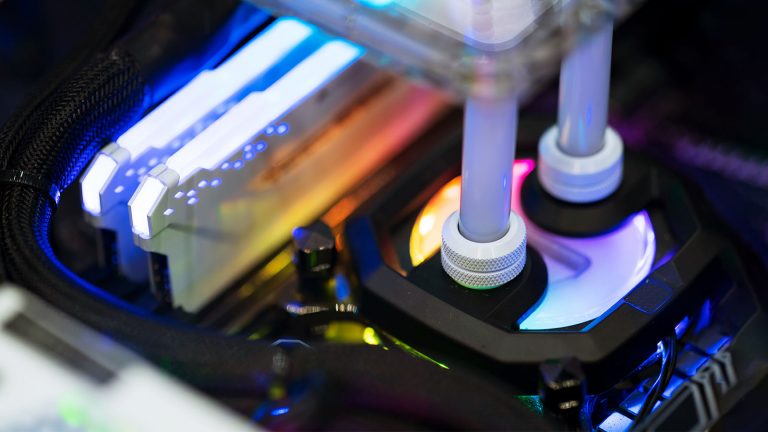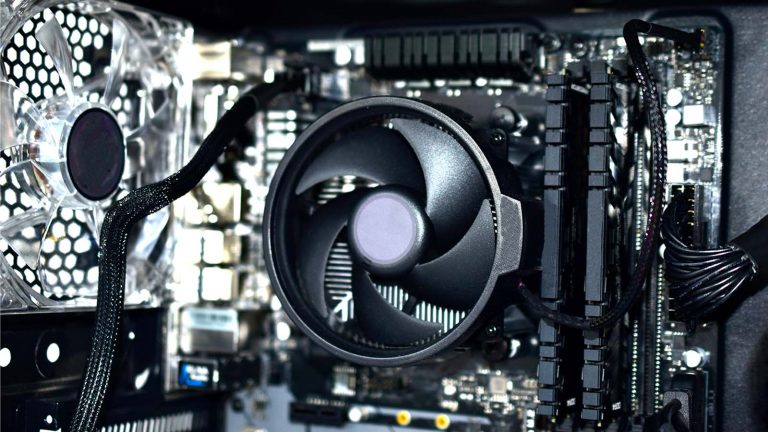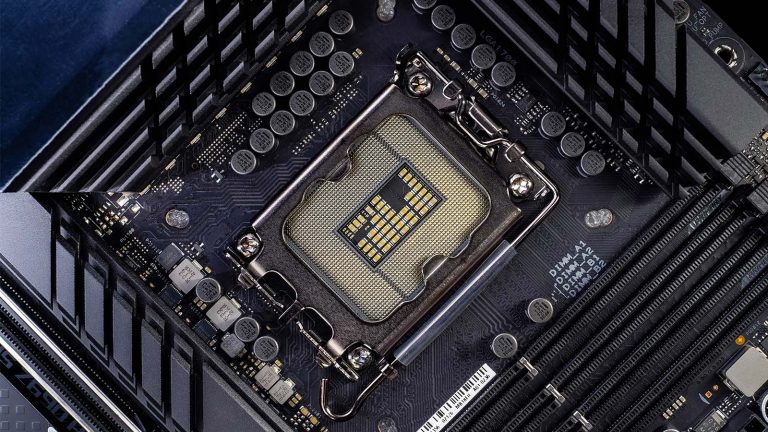6 Best 280mm AIO CPU Coolers in 2025

280mm radiators are quickly becoming the size of choice for the discerning AIO buyer. They’re cheaper than 360mm models but perform nearly identically both in terms of noise and thermal efficiency. Case manufacturers have also begun to take the format seriously, so finding a case that doesn’t stifle the larger 140mm fans is straightforward nowadays.
Which one should you buy? Perusing our list of the best 280mm AIO CPU coolers will go a long way towards answering that question for you. We have top picks occupying varying price brackets and others that satisfy different criteria like aesthetics & noise generation. Regardless of which of these is most important to you, all the featured AIOs can efficiently cool any current desktop CPU from Intel and AMD alike.
Best High-end 280mm AIO: Corsair iCUE H115i Elite Capellix
Best Mid-range 280mm AIO: NZXT Kraken X63
Best Budget 280mm AIO: Cooler Master MasterLiquid ML280 Mirror
Best Refillable 280mm AIO: be quiet! Pure Loop 280mm
Best Silent 280mm AIO: ARCTIC Liquid Freezer II 280
Best RGB 280mm AIO: Fractal Design Celsius+ S28 Prisma
Best High-end 280mm AIO CPU Cooler: Corsair iCUE H115i Elite Capellix
The Elite Capellix is the latest in a line of 280mm Corsair coolers with the 115i name, and it’s hands down the most refined. The AIO is by no means cheap, but it’s the best-performing of its kind. It has the potential to be whisper quiet if you tweak it in iCUE correctly. Additionally, the proprietary Capellix LEDs give it some of the best-looking RGB to date.
There are more expensive models out there, but these come with no or minimal gains at best. The 280mm AIO from EK has a fancier water block, while the NZXT Z63 comes with an LED screen.
Let’s start with the least remarkable thing about the AIO – its radiator. The aluminum slab is well made and of a standard thickness. However, two ML140 fans attach to it and steal the show with their translucent blades once their sets of eight addressable LEDs are on. More importantly, RGB optimization does not affect their potential since each delivers an impressive airflow of 97 CFM when reaching the 2,000 RPM max.
The head unit is a cube with chamfered edges and a polished cold plate with pre-applied thermal paste. It comes with a dark cap decorated with a slim border and the Corsair logo. You can exchange that for a more transparent version to show the lights off better. Speaking of which, there are 33 Capellix lights inside the head unit. These are brighter, smaller, and more energy-efficient than the competition. They give off an even, neon-like glow that’s awesome to behold.
The attachment part of the H115i Elite Capellix’s installation follows standard procedure. You get backplates for most modern systems, except for Threadripper. Cable management is different since you need to rout ARGB and PWM cables through the accompanying Commander module. The module supports up to six RGB fans, so you can use it to control case fans, provided they’re from Corsair. Placing the module out of sight should eliminate clutter.
We feel that iCUE deserves some attention since it’s both powerful and easy to use. You’ll have a blast configuring all the LEDs in attractive patterns with lots of effects to accompany them. Additionally, you may set custom fan curves or switch between presets instantly. There’s even an option that cuts the fans if the CPU is under a specified temp threshold to eliminate noise.
Running the 115I at its “extreme” preset produces exceptional results. The folks at PC Perspective used it to cool the scalding-hot i9-10900K without imposing any limitations on the CPU and with great effect. This setting is loud, but not unnervingly so. The “balanced” preset will be enough if you’re pairing the cooler with Intel an i7 or a Ryzen 5 5600X, and much quieter to boot.
Best Mid-range 280mm AIO CPU Cooler: NZXT Kraken X63
NZXT has a long history of putting out top-notch cooling solutions, and the trend continues with their latest 280mm AIO. It’s made from premium components and easy to mount without running into cable trouble. It performs well whether you want to cool a high-end processor effectively or drop the RPM for noiselessly handling a mid-range CPU.
The Eisbaer 280 from Alphacool lacks RGB and is slightly cheaper, but its performance is comparable.
No NZXT AIO would be complete without the trademark head unit, and the X63 is even more prominent in that respect since its pump is 10% larger than before. The infinity mirror on top delivers a striking colorful effect. You can reposition it in 30-degree angles, so the NZXT logo at the center is always oriented correctly. Better yet, the brackets can also be moved, which will cut down on installation time and cable management.
The radiator is a 30mm thick unit with a fin density of 24 per inch. This makes it one of the densest out there and means that the fans that ship with it have their work cut out for them. Luckily, NZXT went with a pair of Aer P models. They’re capable 140mm fans that can blast out as much as 98 CFM of air while maintaining high static pressure. Their RPM ranges from 500 to 1.800, so you can set them to rotate more slowly and make less noise if your processor’s thermal demands allow for it.
Much thought has gone into the X63’s setup process. If you get stuck, there’s a physical manual, while the flexible brackets and swivel fittings for the hoses ensure a comfortable fit without straining any of the AIO’s components. Intel users will have the easiest time since thermal paste and a compatible bracket are already in place. Replacing the bracket is a matter of removing one and twisting on the other, so AMD installation isn’t much more difficult. You can secure it with thumbscrews regardless of platform.
Real-life testing shows that the AIO can easily come to grips with overclocked gaming-oriented processors. It keeps them well within a comfortable temperature range at idle and load alike. It’s not as adept at doing so quietly, but many models do worse in this regard.
Best Budget 280mm AIO CPU Cooler: Cooler Master MasterLiquid ML280 Mirror
The newest version of Cooler Master’s popular MasterLiquid line concentrates on providing improved safety and great performance at a price that won’t hurt your wallet. You even get ARGB in an infinity mirror head unit that arguably looks better than the Kraken’s.
The CLC 280mm from EVGA is an older model but still worth your time if you want a sub-$100 AIO and can’t find our main recommendation.
The infinity-mirrored pump head is the star of the show, and not just due to the brilliant light show it can produce. The pump has an improved dual-chamber design that separates cold and hot liquid better. It’s also larger than before, which helps with heat transfer efficiency. The ARGB LEDs inside emit an even glow and look amazing in tandem with the mirrors. A pair of swivel fittings connect it to a set of braided tubes.
The radiator might be boring, but it’s as vital as the head unit for smooth operation. It houses twin SickleFlow 140mm fans that deliver an average airflow of 67CFM and rotate between 650 and 1,400 times per minute. The blades are a metallic gray color, which helps them stand out.
The MasterLiquid ML280 Mirror arrives with an RGB controller programmed with a handful of presets. You don’t need to use it since the lighting is compatible with sync software from all major motherboard manufacturers. However, you have to install the controller for the ARGB to work regardless. Other components follow a standard installation path. We particularly appreciate the thumbscrews you use to mount the fans.
It’s heartening to see that the ML 280 can compete against and even outperform air coolers that are bulkier and more expensive. It’s slightly better than the iconic NH-D15 in this i7-7700K test and shows a minimal difference compared to more expensive 280mm models. The noise it makes is tolerable, especially if you have louder case or GPU fans.
Best Refillable 280mm AIO CPU Cooler: be quiet! Pure Loop 280mm
Most AIOs are closed systems, meaning that you’re stuck with inaccessible coolant that might partially evaporate after years of daily use. Be quiet! ships their newest Pure Loop AIOs with a large bottle of coolant that will keep them running smoothly for longer than most. Add efficient operation and an easy install, and you’ve got a product that punches above its
price point.
Despite not having colorful lights, the Pure Loop 280mm is among the most eye-catching coolers on our list. Its generally black aesthetic is tastefully broken up by the silver head unit and its border of neutral white light. The rhomboid shape doesn’t hinder mounting and won’t conflict with nearby hardware. Interestingly, the pump isn’t inside the head unit but sits between it and the radiator.
The otherwise nondescript radiator is intriguing because of its refill cap. You can unscrew it without voiding the warranty and top off the coolant as needed. Given the size of the bottle, you should have enough for several uses. The Pure Wings 2 fans are highly regarded and anything but ordinary. Their blades have a wavy surface that creates ripples in the air as it passes, causing turbulence and improving cooling efficiency. They have a max RPM of 1,600 and rarely need to use it.
AMD users aren’t in luck this time since the Pure Loop comes with custom mounting hardware for the platform. Still, setting it up is no different than with most AIOs. Some aspects are even more accessible, like reduced cable management due to two Y-splitters being included.
Expect great things from the AIO regardless of the processor it’s supposed to cool. Hexus put it through its paces with a power-hungry 3950X, which the AIO had no trouble with even with overclocking applied. This is one of the few products that doesn’t do the company name justice since acoustics aren’t the best. However, many users will gladly live with a bit of noise if it means getting the otherwise commendable feature set.
Best Silent 280mm AIO CPU Cooler: ARCTIC Liquid Freezer II 280
The middle child in Arctic’s second Liquid Freezer lineup has all it takes to stand the test of time and be mentioned in the same breath as air coolers from Noctua and be quiet! The AIO could have single-handedly taken up several places on the list as its performance and value are both fantastic. This time, we focus on the fact that it also happens to be the quietest of the bunch.
Much of the Liquid Freezer II 280’s silence has to do with the design of its radiator backed by capable fans. Radiators are ordinarily 27mm thick, but this one is a beefy 38mm. Arctic thinned its insides out, dropping the fin count to just 14 per inch. That results in a radiator that’s easier to blow through without a loss of thermal efficiency. Two P14 fans are already hooked up to push air outward. A CFM of 72 puts them behind most other models we’ve talked about. Still, the potential to rotate at as little as 200 RPM is indicative of the kind of sound levels you can expect.
The unusual head unit is the second part of the equation. It isn’t symmetrical as there’s a small fan towards one side. The fan blows air through openings underneath and helps cool the VRM. The head unit is mountable in 90-degree increments so that you may direct air towards the GPU or RAM instead.
Most AIOs follow streamlined installation procedures nowadays, but the Liquid Freezer II takes this to another level. Intel users start by attaching the backplate as usual and have barely anything to do after that since the bracket and fans are already set up. Only one PWM cable is used to power the entire assembly, unifying the fan cables that travel inside the tubing’s braided sleeve. AMD lovers simply need to change the mounting bracket on top of this.
As you’d expect from the title, the acoustics are excellent. They aren’t as impressive when idling, but start running a CPU-heavy game or render something in Blender and see the competition dwindle. Not convinced yet? How about pairing the AIO with an overclocked i9-9900K and seeing it at the top of the charts! Whichever angle you examine it from, the Liquid Freezer II 280 delivers.
Best RGB 280mm AIO CPU Cooler: Fractal Design Celsius+ S28 Prisma
Fractal Design is a respected case manufacturer with an expanding interest in the AIO space. The refreshed Celsius line is highly regarded in general, but we like the Celsius+ S28 Prisma the most due to the richness and coverage of its RGB. Its efficiency is excellent, and you can expect quiet operation under the right circumstances too.
The head unit’s design and functionality have received a lot of attention. It now has an attractive tapered look and ends in a nice RGB ring and the company’s light-up logo in white. The cap doubles as a switch for fan control. Setting it to Auto will let the Celsius govern heat regulation on its own while switching to PWM delegates that duty to the motherboard.
The radiator is intriguing in that it doubles as a cable hub. Headers on the front let you hook the fans’ PWM and ARGB cables up without generating clutter. Power leads then travel along the braided tubes and aren’t in the way during installation. The fans used are two Prisma AL-14 units with an impressive airflow of 103 CFM and an RPM range of 500 to 1,800.
There’s not much to the installation, other than it’s quick and backed by a helpful manual. You have to set up the backplate and corresponding screws & washers to establish an anchor point. You then screw in the brackets, making sure they fit your system. Securing the fans to the radiator and plugging the cables into their respective headers is all that remains. The AIO looks attractive when finished, and the ARGB LEDs have excellent diffusion.
While mesmerizing to look at, the Celsius+ is also a capable cooler. Techpowerup’s array of vigorous tests left it unfazed, whether the test CPU was subjected to normal loads or tortured with AIDA64. The AIO holds its own even when dealing with overclocked processors. The noise sweet spot seems to be 50% RPM, but the cooler isn’t overly loud at higher speeds either.
Frequently Asked Questions
How reliable are AIO water coolers? Do they need maintenance?
Brand-name AIO coolers are reliable now more than ever. Leakage is the chief concern among users, and it’s also among the rarest reasons for AIO failure. When the cooler does give out, it’s usually due to one of the fans failing. You can easily replace the radiator fans – only a dead pump fan is cause for getting an entirely new cooler.
If you take care of it, your AIO can last 5-7 years and serve you well on multiple systems. Maintaining one isn’t a chore as you only need to make sure the radiator and fans remain dust-free.
Are AIO water coolers better than air coolers?
Yes, in the sense that the best AIOs can outperform the best air coolers. Whether or not yours will do the same depends on many factors like radiator size, fan speed, and the CPU that needs cooling. Several 280mm radiators achieve lower temperatures than the best air coolers, but they’re also more expensive and not necessarily less noisy.
What is the best AIO placement?
There are two main ways of placing your AIO, both with advantages and weaknesses. Mounting it on the top of your case will eject hot air out into the open, but the air inside the case itself will be hotter. Front-mounted AIOs blow fresh air inside the case rather than expel it. However, the air’s temperature rises since it has to pass through the radiator before reaching other components.
Which configuration you should use depends more on the design of your GPU than the AIO itself. A blower-style graphics card that expels air through the back of the case will affect the CPU’s thermals similarly in either case.
You’ll benefit more from a front-mounted radiator if you have an open card since the intake of cool air will prevent the heat the card generates from reaching the CPU. Overall system temperatures complicate matters further as they’re better with top-mounted radiators.
Whichever way you choose, make sure that the top of the radiator is higher than the pump. This will prevent air buildup in the pump and help it work at optimum efficiency.

